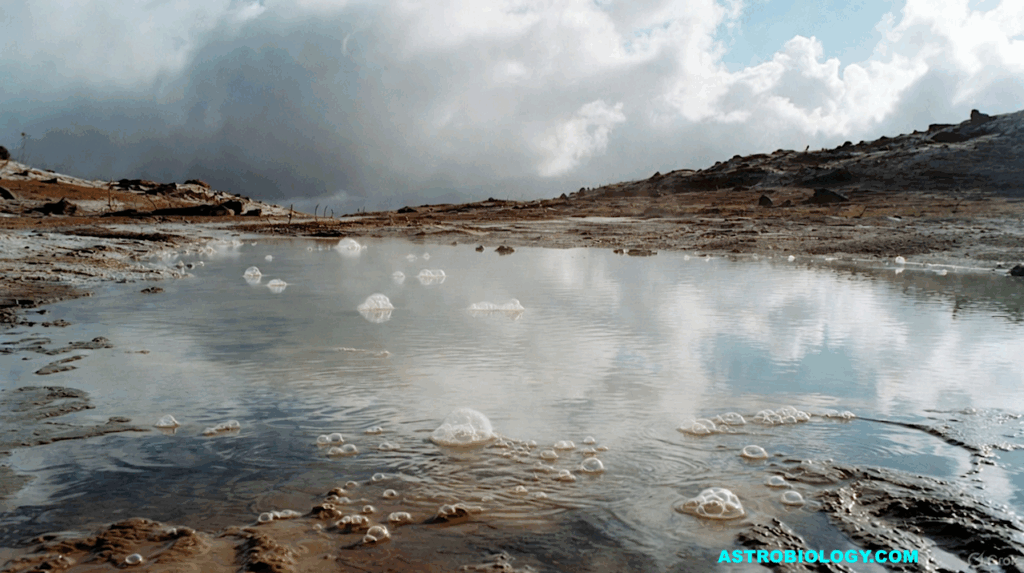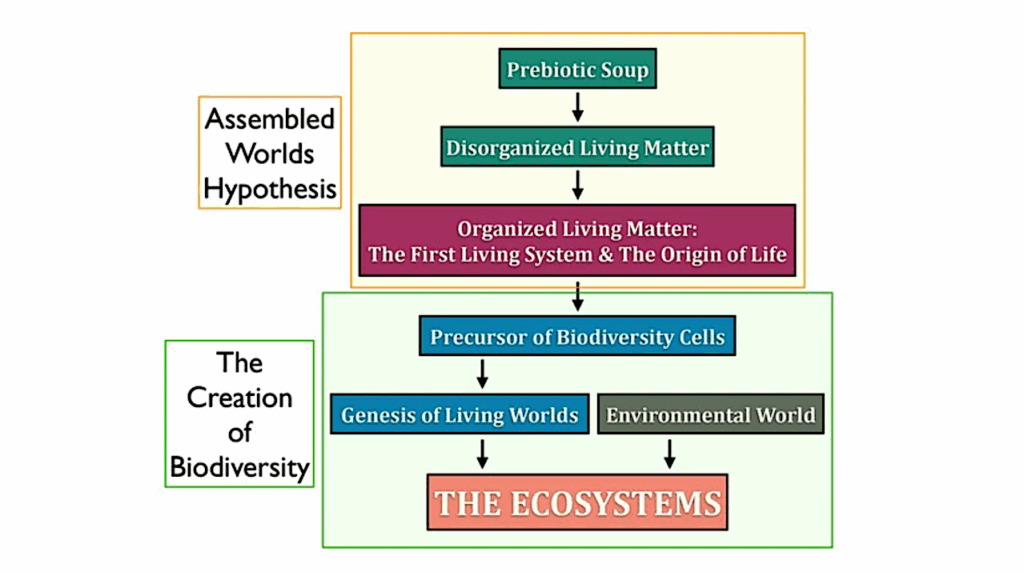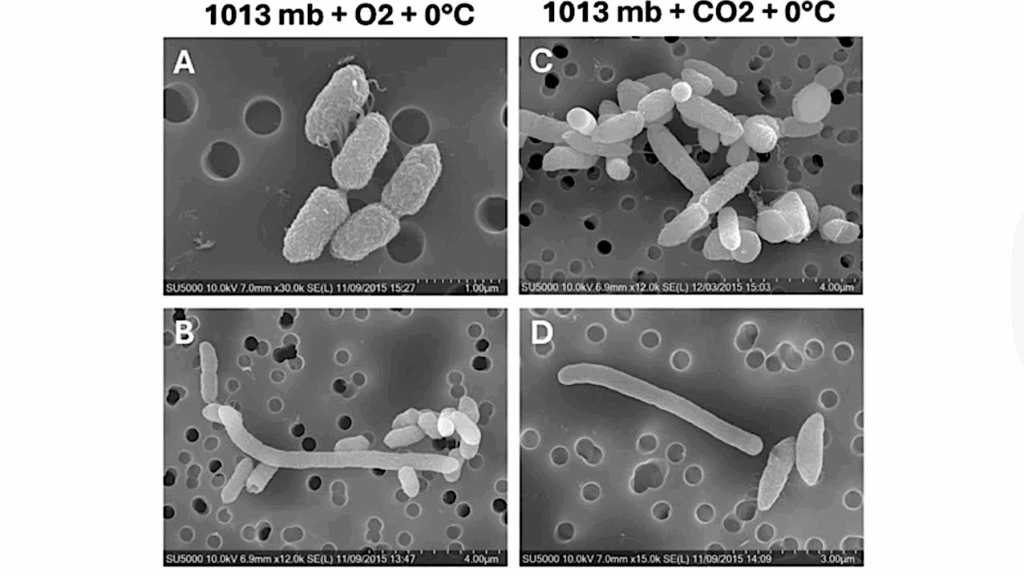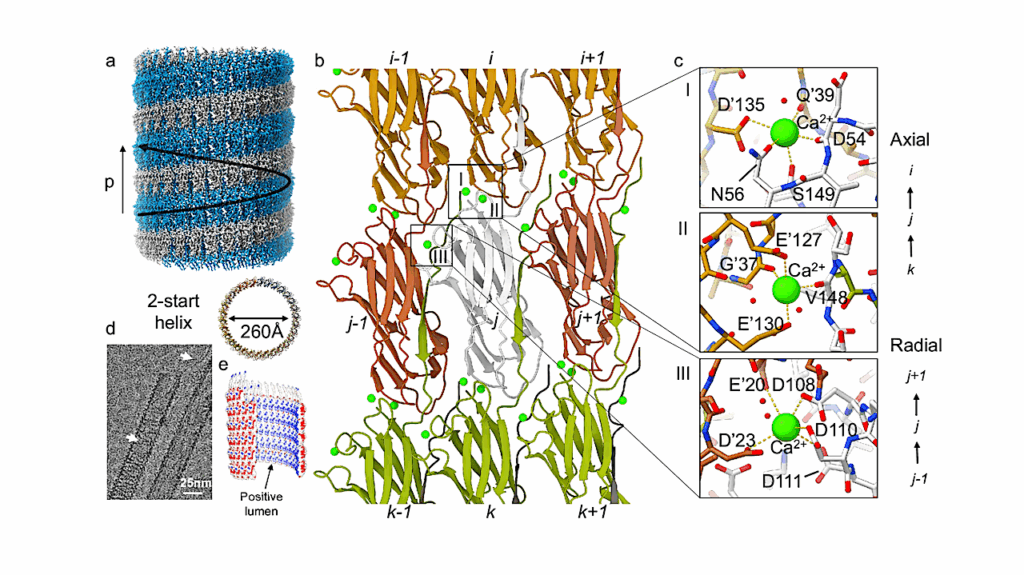Thermodynamic Limits On Oxygenic Photosynthesis Around M-dwarf Stars: Generalized Models And Strategies For Optimization
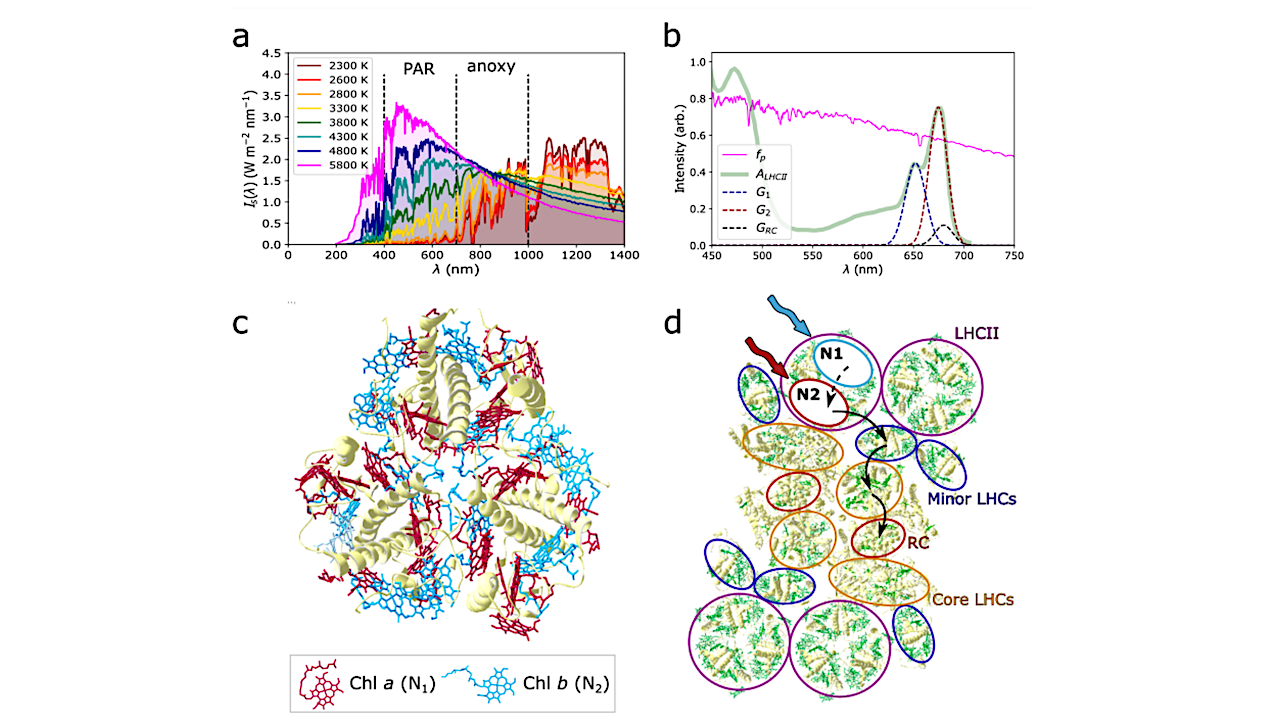
We explore the feasibility and potential characteristics of photosynthetic light-harvesting on exo-planets orbiting in the habitable zone of low mass stars (<1 M⊙).
As stellar temperature, Ts, decreases, the irradiance maximum red-shifts out of the 400nm≤λ<750 nm range of wavelengths that can be utilized by \emph{oxygenic} photosynthesis on Earth. However, limited irradiance in this region does not preclude oxygenic photosynthesis and Earth’s plants, algae and cyanobacteria all possess very efficient \emph{light-harvesting antennae} that facilitate photosynthesis in very low light. Here we construct general models of photosynthetic light-harvesting structures to determine how an oxygenic photosystem would perform in different irradiant spectral fluxes.
We illustrate that the process of light-harvesting, capturing energy over a large antenna and concentrating it into a small \emph{reaction centre}, must overcome a fundamental \emph{entropic barrier}. We show that a plant-like antenna cannot be adapted to the light from stars of Ts<3400 K, as increasing antenna size offers diminishing returns on light-harvesting. This can be overcome if one introduces a slight \emph{enthalpic gradient}, to the antenna. Interestingly, this strategy appears to have been adopted by Earth’s oxygenic cyanobacteria, and we conclude that \emph{bacterial} oxygenic photosynthesis is feasible around even the lowest mass M-dwarf stars.
Samir Chitnavis, Thomas J. Haworth, Edward Gillen, Conrad W. Mullineaux, Christopher D. P. Duffy
Comments: 5 Figures, submitted to Astrobiology and awaiting return of review
Subjects: Earth and Planetary Astrophysics (astro-ph.EP); Solar and Stellar Astrophysics (astro-ph.SR); Biological Physics (physics.bio-ph)
Cite as: arXiv:2309.12845 [astro-ph.EP] (or arXiv:2309.12845v1 [astro-ph.EP] for this version)
Submission history
From: Christopher Duffy
[v1] Fri, 22 Sep 2023 13:11:21 UTC (2,179 KB)
https://arxiv.org/abs/2309.12845
Astrobiology, Botany,



